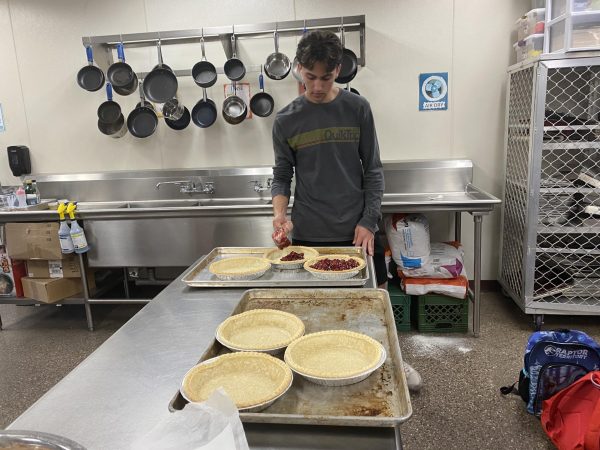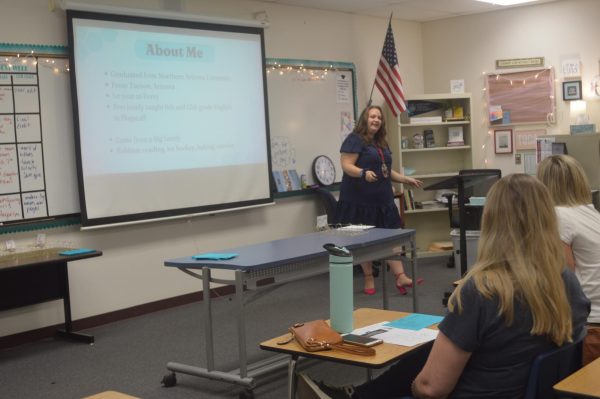Covering the cost of COVID-19
CUSD Chief Financial Officer breaks down how the pandemic has affected the district’s fiscal management
CFO Lana Berry outlines the district’s budget in response to COVID-19. The district has spent 18.5 million dollars on mitigation.
The coronavirus pandemic seems to have left nothing unscathed. Sports, events, classwork- the school day as we have known it has changed dramatically and quickly.
The same can be said of the Chandler Unified School District’s fiscal management.
To address some questions, the Precedent staff sat down with CUSD’s Chief Financial Officer, Lana Berry, to discuss how the unpredictable school year has affected the way that the district is spending their money.
The first- and most crucial- change that has affected budgeting is the fact that CUSD has low enrollment. “What happened this year is that we’ve lost a whole bunch of kids,” Berry explained. “That financially impacted us drastically.” Low enrollment takes a hit on the district’s budget because, according to Berry, “the budget is based off of kids.” She also mentioned that, because of Gov Doug Ducey’s executive order, and the Governing Board’s consecutive decision to hold off in-person learning until September, the district lost even more revenue.
A second big factor in the budget is the hit COVID-19 mitigation has taken. Berry noted that the district spent “18.5 million dollars” on supporting teachers in at-home instruction, providing resources for students, and other areas to keep schools up and running. In July, the district purchased both new laptops and PCs for each teacher in the district as well as document cameras for overhead notes, and provided laptops and wifi to any student that required it for online school.
The process of fiscal management was another thing sidestepped
“We have all these expenses that we never approved,” Berry explained, citing that 18.5 million spent on various mitigation. In an average year, the Governing Board makes budget decisions, but in this anomaly of a school year, fiscal policy was pushed through to get processes moving.
On Oct 14 of last year, Berry presented the budget wrap up, (as per CUSD Policies under the section “Fiscal Management,” where it states “On or before October 15 of each year, the Superintendent shall present to the Board the annual financial report for the previous fiscal year and the Governing Board shall submit the annual financial report for the previous fiscal year to the Department of Education,”).
The meeting minutes from that specific presentation noted that, “there are increased expenditures because of COVID and we have not yet received reimbursement; however, there were savings in disposal services and electricity because of school closures in the 4th quarter of 2019-20 school year.” The minutes also reassure that “we have a lot of financial stability in CUSD.” We have a lot of financial stability in CUSD. — Governing Board meeting minutes
Berry also noted that the district’s new high school and the new Rice Elementary School have been unaffected by the shift in budgeting. “[The new schools] are paid for out of our bond dollars,” she stated. “Our voters approved to build those schools.”
In regards to solutions, Berry mentioned staff cuts. Less enrollment and students means less need for staff, but “that’s not a fun process because you’re talking about livelihoods,” she explained. The district also has money in its reserves, or savings account. In addition, federal stimulus has been provided but, Berry admitted that “it’s not enough; it doesn’t cover our loss.”
Those solutions, while viable, will not produce 18.5 million dollars overnight. This renders the CUSD budget as another victim of COVID-19.

Anna Myers is a senior at Perry High School, and is excited to be the 2020-21 Managing Editor for The Precedent. Out of the newsroom, Anna enjoys participating...










